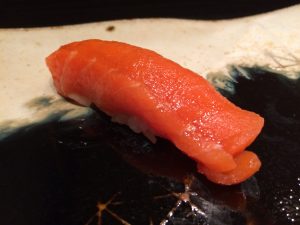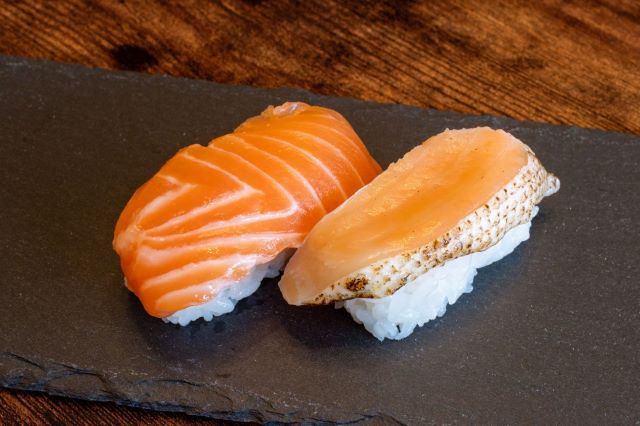
If you ask people around the world what their favorite fish is, the answer is sure to be salmon. Its flesh is tender and fatty, with few small bones, and its color is appetizing. But we don’t think most people around the world pay much attention to the type of salmon they eat. This is not surprising, since people do not have the habit of eating many kinds of fish in their daily lives. In Japan, it is common for the species offered to change with the seasons, even among fish of the same family. We sometimes sense that the season has changed based on the change in fish species. For example, seeing a Salmon (Chum, Keta, or Dog salmon) moving up the river, one senses that it is autumn.
This article explores salmon, for which we were able to confirm statistical data. Also, see below for the differences between trout and salmon.
Trout vs. Salmon: What’s the Difference?
Global demand for salmons is strong and production is growing rapidly. Currently, the global production of salmon is over 5 million tons/year. Of this, more than 4 million tons are farmed, of which roughly 3 million tons are Atlantic salmon and 1 million tons are Rainbow trout. The salmon that people around the world say they love are Atlantic salmon and Rainbow trout.
Atlantic salmon is produced in Norway, the United Kingdom, Ireland, the Faroe Islands, Iceland, Canada, the United States, Australia, and Chile. Trout salmon (Rainbow trout) is produced in Norway, Finland, Sweden, Denmark, England, Ireland, Turkey, and Chile.
Although production is low, King salmon, Silver salmon, Cherry salmon, and Brown trout are also commercially farmed. King salmon is a very delicate fish and can only be found in areas with clean water. For this reason, it is difficult to farm, and King salmon accounts for less than 1% of all salmon farmed in the world. New Zealand, Canada, and Chile are the only countries that have succeeded in commercial farming of King salmon. In New Zealand, which is a rare example from a global perspective, no antibiotics are given to the fish. Silver salmon is farmed in Peru, Japan, and other countries, with a yearly production of over 20 tons. It is used as a standard side dish for bento (lunch box) in Japan. Cherry salmon is farmed only in Japan and does not reach 30 tons/year. Masu zushi, a famous specialty of Toyama Prefecture, is made from cherry salmon.
On the other hand, the catch of wild salmon has remained flat for the past 40 years at around 1 million tons/year. More than 90% of the catch consists of six species: King or Chinook salmon, Chum, Keta or Dog salmon, Pink or Humpback salmon, Silver or Coho salmon, Red or Sockeye salmon, and Steelhead trout (Rainbow trout).
Salmon mainly caught in Japan are Chum salmon (Japanese name: Sake, Akizake, Shirozake), Pink salmon (Japanese name: Karafuto-masu), King salmon (Japanese name: Masunosuke), Cherry salmon (Japanese name: Sakura-masu).
The main production areas are Hokkaido, Aomori, Iwate, Miyagi, and Niigata. Red salmon (Japanese name: Benizake) and silver salmon (Japanese name: Ginzake) are rarely caught only in Hokkaido. The catch of chum salmon, which used to be over 100,000 tons/year, has been drastically reduced to less than 50,000 tons/year. On the other hand, Alaska and Russia have recorded catches of over 400,000 tons/year and can be said to have good catches.
However, whether it is farmed or natural salmon is not even a subject of debate, except among some chefs and Japanese. In our opinion, the decision of whether to use farmed or wild should be based on the type of dish to be cooked.
From here, we get down to business.
It has long been said that pink salmon, the most abundant salmon caught in Japan, is not suitable for nigiri sushi. This is not true. It is simply because salmon in good condition was difficult to obtain in the past due to the lack of a well-developed distribution system. As proof of this, migratory pink salmon is highly valued for its rich flavor and fat. On the other hand, pink salmon that have gathered to spawn have lost their fat and are tasteless. This is a common story for all salmon.
In Japan, King salmon, Cherry salmon, farmed Atlantic salmon and Rainbow trout, and Chum salmon, which was born in Russian rivers and migrates along the Hokkaido coast, are used as sushi toppings (ingredients). There was a time around 1980 when sushi chefs used to serve red salmon, which he named Beni-toro, but there is no sign of it now. And we rarely hear of Chum salmon returning to the river where it was born in the fall to be made into Nigiri sushi. Worldwide, only a few countries, such as Russia, Canada, and Alaska in the United States, use wild pink salmon, silver salmon, and red salmon as Nigiri sushi.
We can say with certainty that Edomae Sushi restaurants do not use any salmon. As time goes by, some restaurants have begun to offer King salmon, Chum salmon, Cherry salmon, Biwa trout, and other rare sushi toppings as their main selling point, but only a few of them do so.
Chum salmon originally return to Japan in the fall, but those migrating off the coast of Japan out of season are called Keiji, Tokishirazu, and Mejika to distinguish them. The mother river is in Russia. Chum salmon originally return to Japan in the fall, but those migrating off the coast of Japan out of season are called Keiji, Tokishirazu, and Mejika to distinguish them. These are rarely found in some high-end sushi restaurants, as they have a fresh flavor and fat that is ideal for nigiri sushi. Of course, they are also delicious in other dishes. However, it should be frozen once to kill Anisakis and other fish before making sushi. This is one of the reasons why salmon has been avoided as a sushi topping.
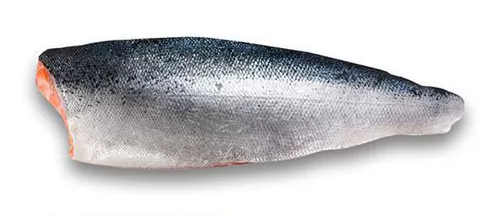
On the other hand, Atlantic salmon and Rainbow trout (known as Salmon trout or Trout salmon) are farmed at sea, exported without ever being frozen, and used for sushi at conveyor-belt sushi restaurants. The fish is already processed into fillets, so the chef only needs to remove the skin.
As a side note, salmon farming is said to have less environmental impact than other fish species. And from the perspective of the SDGs, we are moving from sea farming to land-based aquaculture. In addition, farmed salmons are being actively improved and blended with different species.
Now you may know what kind of salmons you are eating. For your reference.
Related contents:
Learn more about salmon
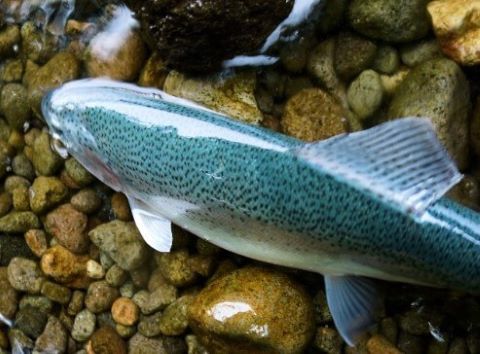

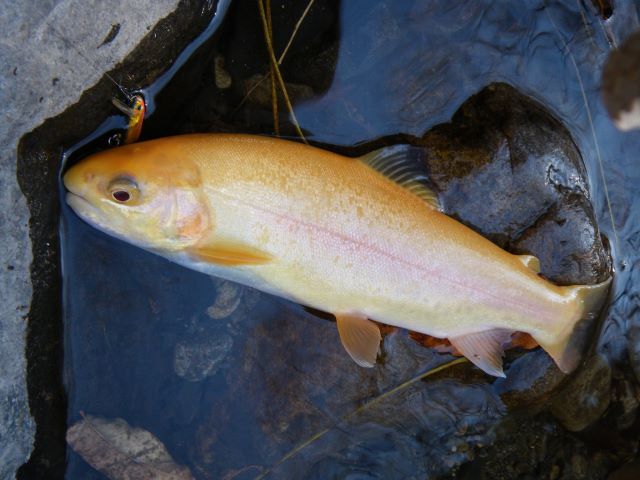
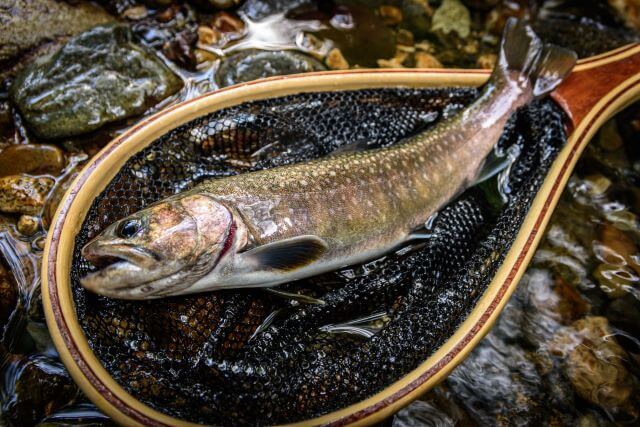
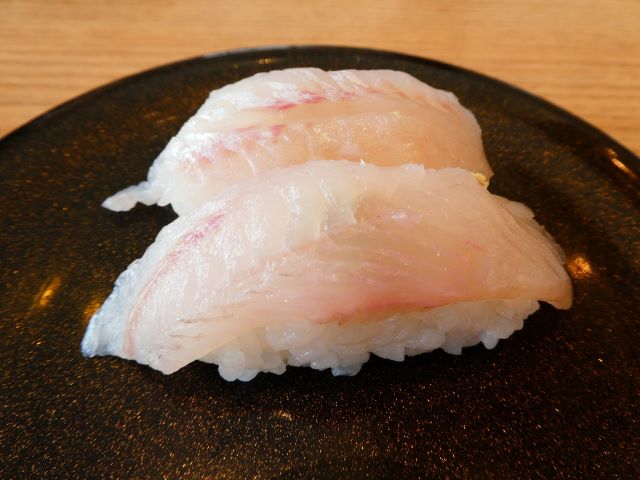
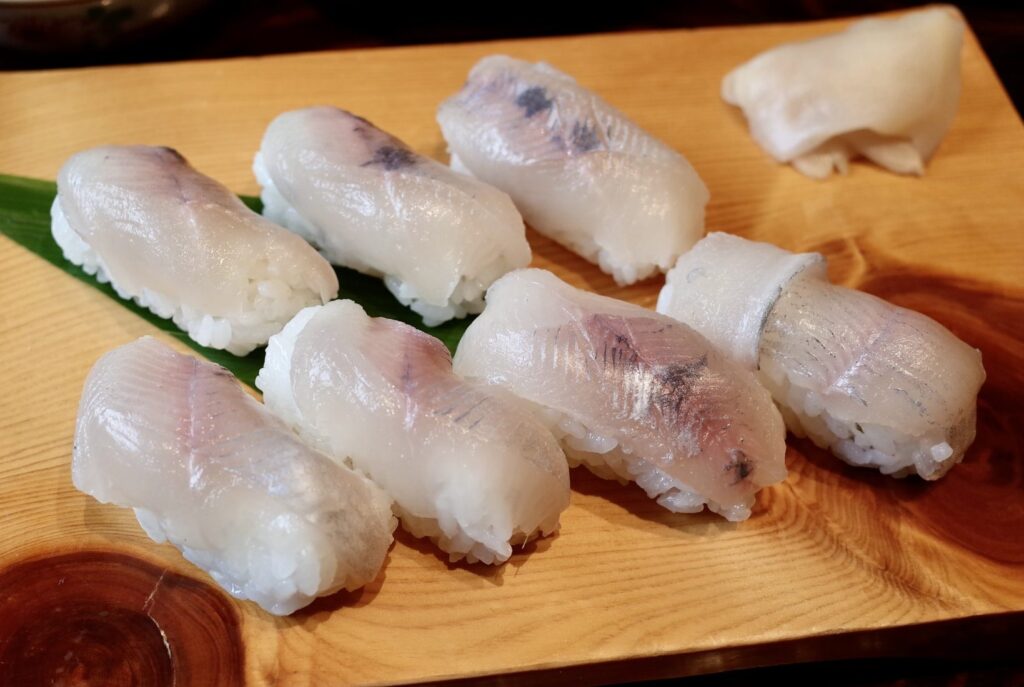
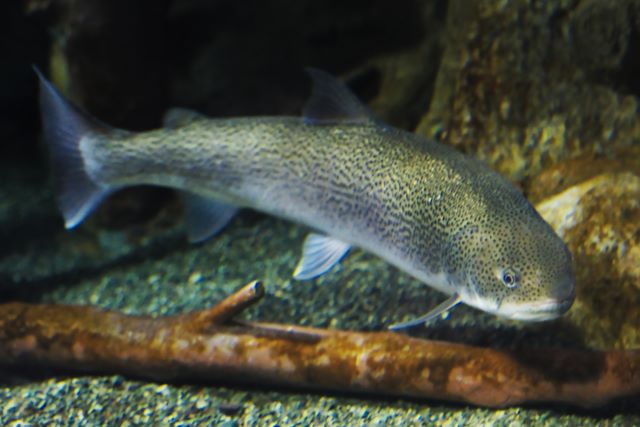
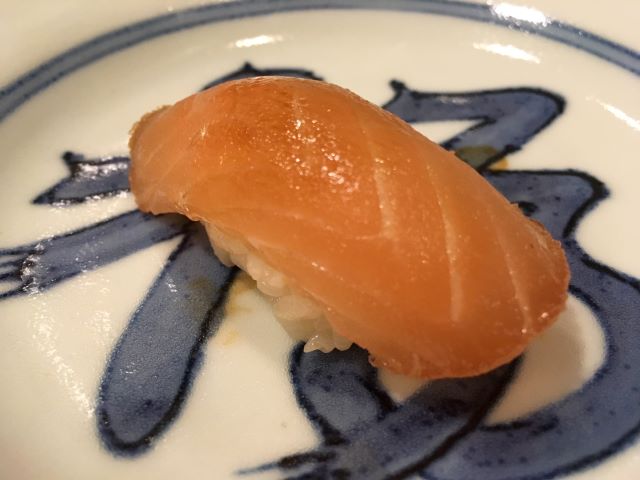
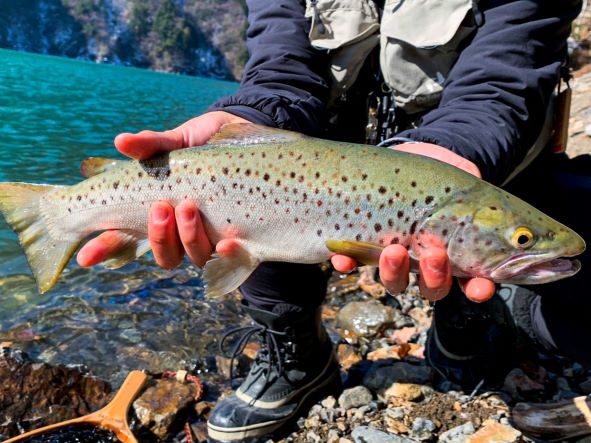
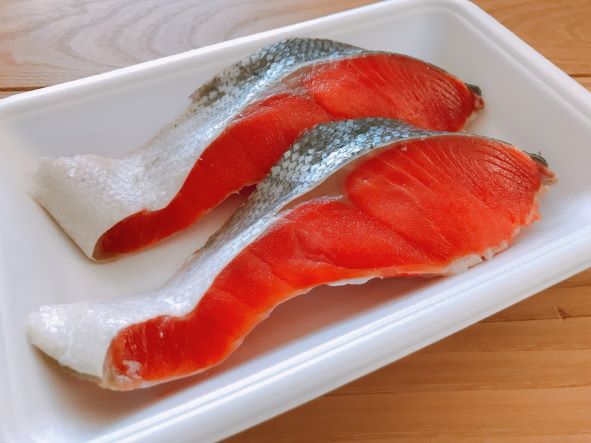
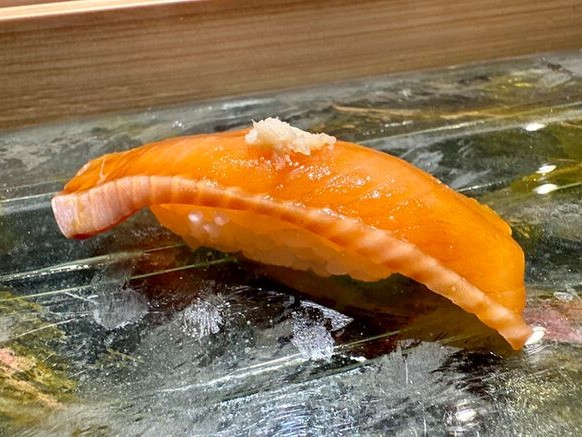
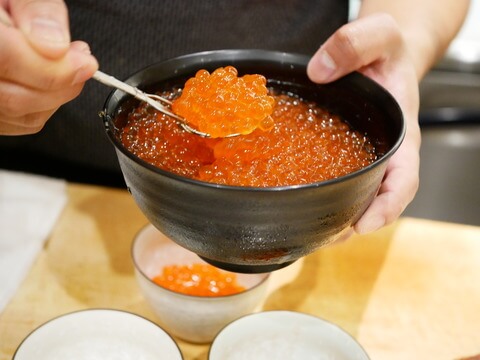 In Japan, salmon roe that has been separated from the ovarian membrane and then salted is called ikura. At sushi restaurants, this is also marinated in broth that includes soy sauce, mirin and sake. This is called ikura marinated in soy sauce, or simply ikura. Worldwide, caviar is considered to be of more value than ikura. Therefore, in an attempt to improve the impression of soy sauce-marinated ikura, it is sometimes called ‘salmon caviar’. This is behavior especially seen among manufacturers selling soy sauce-marinated ikura.
In Japan, salmon roe that has been separated from the ovarian membrane and then salted is called ikura. At sushi restaurants, this is also marinated in broth that includes soy sauce, mirin and sake. This is called ikura marinated in soy sauce, or simply ikura. Worldwide, caviar is considered to be of more value than ikura. Therefore, in an attempt to improve the impression of soy sauce-marinated ikura, it is sometimes called ‘salmon caviar’. This is behavior especially seen among manufacturers selling soy sauce-marinated ikura.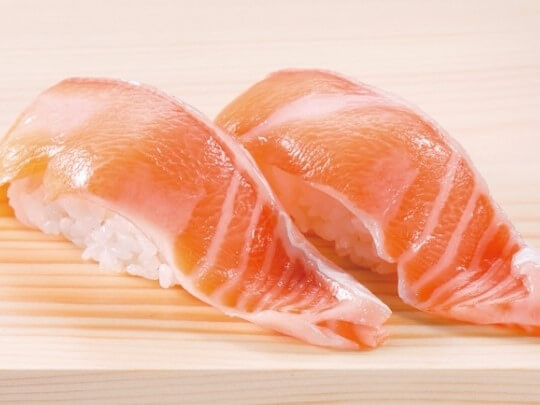 You probably already know this, but “toro tuna” is not the name of a type of fish. “Toro” is the name of a fatty part of the tuna. The fat content and attributes of the belly side of the tuna are completely different from that of the dorsal side. Toro is the name of the part near the head, mostly on the belly side.
You probably already know this, but “toro tuna” is not the name of a type of fish. “Toro” is the name of a fatty part of the tuna. The fat content and attributes of the belly side of the tuna are completely different from that of the dorsal side. Toro is the name of the part near the head, mostly on the belly side.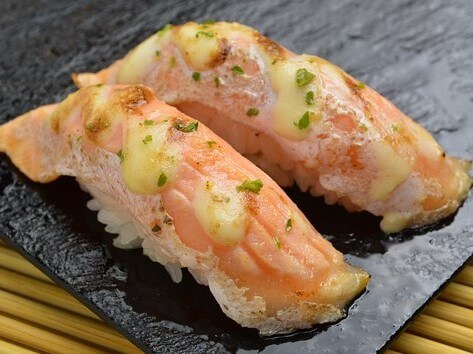 The Donaldson trout is farmed throughout Japan and is used as toro salmon and aburi salmon at conveyor belt sushi restaurants. Since they are supplied directly to the processor (of the salmon) from the farmer without going through the market, they may be sold cheaper than the import price. Just like the imported salmon, this farmed salmon is also fed artificial coloring. There are also already new variants improved from the Donaldson trout being bred. Trout made from breeding Donaldson trout females and steelhead males are called Donaldson steelhead, for instance. They grow even faster.
The Donaldson trout is farmed throughout Japan and is used as toro salmon and aburi salmon at conveyor belt sushi restaurants. Since they are supplied directly to the processor (of the salmon) from the farmer without going through the market, they may be sold cheaper than the import price. Just like the imported salmon, this farmed salmon is also fed artificial coloring. There are also already new variants improved from the Donaldson trout being bred. Trout made from breeding Donaldson trout females and steelhead males are called Donaldson steelhead, for instance. They grow even faster. Few foods manage to captivate the senses as completely as salmon. From its vivid orange color to its buttery texture and gentle sweetness, salmon is beloved around the world—in sushi bars, on breakfast tables, and at fine dining restaurants. But what makes this fish so irresistibly delicious?
Few foods manage to captivate the senses as completely as salmon. From its vivid orange color to its buttery texture and gentle sweetness, salmon is beloved around the world—in sushi bars, on breakfast tables, and at fine dining restaurants. But what makes this fish so irresistibly delicious?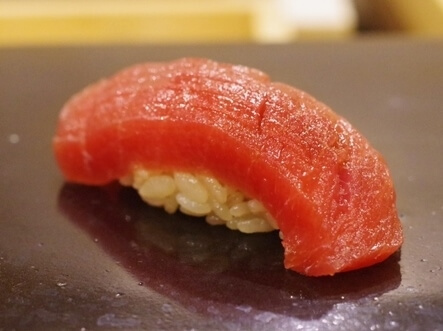 Natural fish are part of the food chain and have concentrations of harmful substances. Since 2000 the amount of mercury found in fish has become an issue. The American Natural Resources Defense Council has said tuna is a fish that should be avoided if pregnant or planning to get pregnant. A more recent problem is the large amounts of micro plastics found in fish meat. This shocking phenomenon will likely be reported by research organizations at some point in time. If it does reach that extreme, then it will be better to avoid the danger of eating fish.
Natural fish are part of the food chain and have concentrations of harmful substances. Since 2000 the amount of mercury found in fish has become an issue. The American Natural Resources Defense Council has said tuna is a fish that should be avoided if pregnant or planning to get pregnant. A more recent problem is the large amounts of micro plastics found in fish meat. This shocking phenomenon will likely be reported by research organizations at some point in time. If it does reach that extreme, then it will be better to avoid the danger of eating fish.
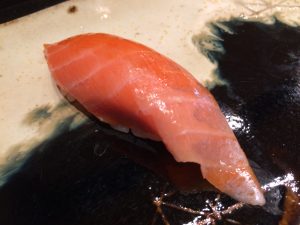 The Japanese were not in the habit of eating salmon raw. Salmon was not a traditional topping in Edo-style sushi. The reason for this is that the existence of parasites has been well-known since long ago and there was no way to prepare the salmon raw.
The Japanese were not in the habit of eating salmon raw. Salmon was not a traditional topping in Edo-style sushi. The reason for this is that the existence of parasites has been well-known since long ago and there was no way to prepare the salmon raw.